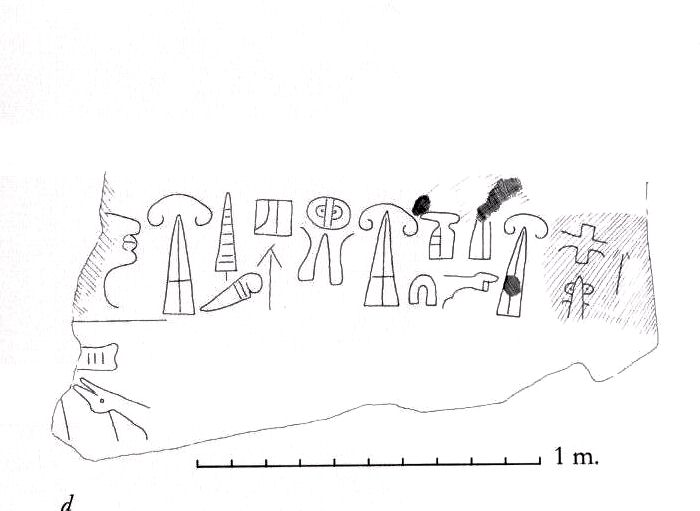
2800-year-old Burunkaya Inscription written in Luwian Hieroglyphic
Among the rich historical heritage of Anatolia, inscriptions are the most important sources that shed light on thousands of years ago. One of these inscriptions is the Burunkaya Inscription written in Hieroglyphic Luwian.
The Burunkaya Inscription is located on the Burunkaya hill near the village of Gücünkaya, east of Aksaray province in Central Anatolia.

This 2800-year-old ancient inscription, which carries information about the Late Bronze Age period of Anatolia, has unfortunately been severely damaged due to negligence and deliberate destruction.
The Burunkaya Inscription was discovered by the researcher Oğuz Demir in 1971. The inscription is located on an upside-down stone. The location of this stone is probably a piece of rock that broke off from the hill and fell down.

The inscription, which should have been on the hill, has been detached from its location due to the corrosive effects of gravity and time, and is therefore upside down. The location of the inscription is at a geographically important strategic point, and the content and historical importance of the inscription reinforces this position.
The Burunkaya Inscription consists of a single line inscription written in Hieroglyphic Luwian. It dates to the 8th century BC. The content of the inscription refers to King Hartapu the Great, one of the most important kings of the period. The name of this king is also mentioned in other important inscriptions in the region. Especially the mention of Hartapu’s name in Karadag and Kizildag inscriptions shows that he was a great king and ruled a large region.

David Hawkins gives a possible translation of the Burunkaya Inscription as follows:
“Here Hartapu, the Great King, the Great King, the son of the Hero Mursili, whom the Storm God loves(?), has given/will give his punishment.”
This translation shows that Hartapu was not only a ruler, but also recognized as a figure blessed by the gods. The Storm God is an important deity in the Hittite and Luwian pantheons, and Hartapu’s patronage is emphasized in this inscription. Furthermore, the name Mursili indicates that Hartapu had a noble background and a strong royal lineage.
Unfortunately, the Burunkaya Inscription was deliberately destroyed before 2011. Like many other historical monuments in Anatolia, this inscription was damaged by negligence and deliberate human intervention.
Cover Photo: Burunkaya Inscription (Upside down) Ingeborg Simon, 2017./Wikipedia
You may also like
- A 1700-year-old statue of Pan unearthed during the excavations at Polyeuktos in İstanbul
- The granary was found in the ancient city of Sebaste, founded by the first Roman emperor Augustus
- Donalar Kale Kapı Rock Tomb or Donalar Rock Tomb
- Theater emerges as works continue in ancient city of Perinthos
- Urartian King Argishti’s bronze shield revealed the name of an unknown country
- The religious center of Lycia, the ancient city of Letoon
- Who were the Luwians?
- A new study brings a fresh perspective on the Anatolian origin of the Indo-European languages
- Perhaps the oldest thermal treatment center in the world, which has been in continuous use for 2000 years -Basilica Therma Roman Bath or King’s Daughter-
- The largest synagogue of the ancient world, located in the ancient city of Sardis, is being restored











Leave a Reply